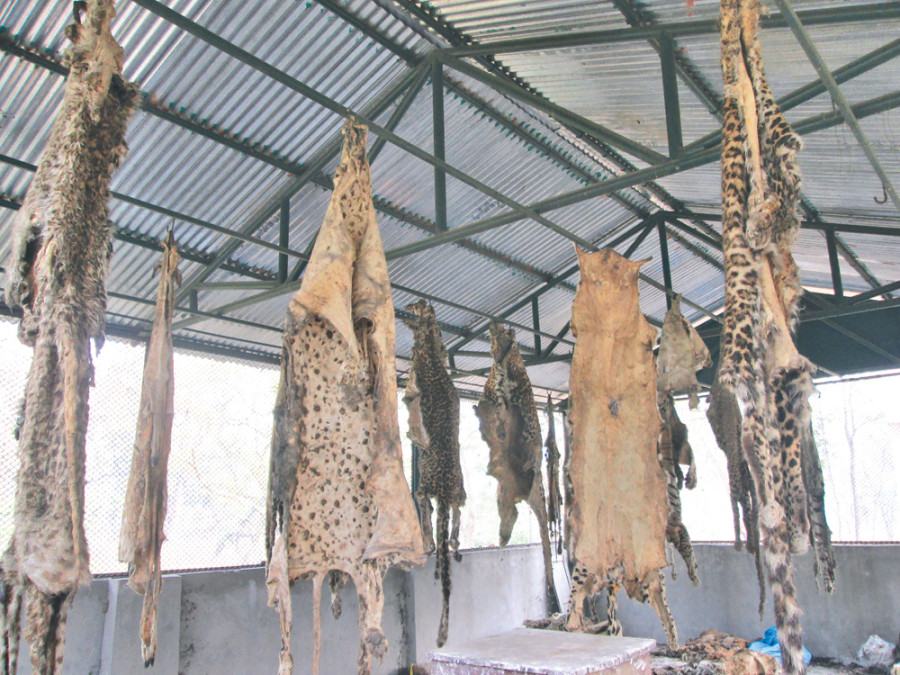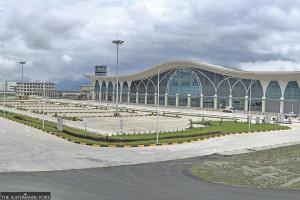National
Mgmt of wildlife body parts, trophies a big challenge
The Parliamentary Committee on Environment Protection on Saturday inspected the areas inside the Chitwan National Park (CNP) where body parts and trophies of protected animals such as tigers and rhinos have been stored for almost two decades.
Pawan Yadav
The Parliamentary Committee on Environment Protection on Saturday inspected the areas inside the Chitwan National Park (CNP) where body parts and trophies of protected animals such as tigers and rhinos have been stored for almost two decades.
A team led by committee Chairman Janak Chaudhary that included parliamentarians, forest officials and media persons visited the Central Storage Centre in Kasara and the Armed Forest Guard Training Centre in Tikauli, where the animal parts seized or confiscated at different times have been kept. The visit was organised as part of the ongoing discussion on finding ways to manage the hundreds of stored items, most of which have been damaged.
“Proper management of the wildlife body parts and trophies has emerged as a serious challenge for conservationists,” Chaudhary said after an inspection of the sites on Saturday morning.
According to him, the committee will take up the issue and hold discussion among the parliamentarians and concerned offices to find ways to manage them properly.
“Many stored items are decaying. The items in good condition and of significance can be protected by storing them in safe and proper places, such as museums and research institutions,” Chaudhary added.
The Department of National Parks and Wildlife Conservation had formed an experts’ committee to look over the management of the seized wildlife parts.
The committee had recorded 369 rhino horns along with 4,782 rhino hooves, skulls, skins and products, 69 tiger hides, 3 snow leopard skins, 2 clouded leopard skins, 184 elephant tusks, 36 musk deer pods, 439 kg tiger and leopard bones and 352 pangolin scales, among others.
A ministerial meeting held about two months ago also approved the working procedure to manage valuable wildlife parts and products by either destroying them or preserving them at museums, research facilities and educational institutions.
The government in 1998 had for the first time burnt the seized wildlife parts and products stored in various protected areas.
The move had courted controversy as wildlife conservationists and experts criticised the authorities’ decision of not destroying the highly valuable rhino horns. Since 1998, no parts have been destroyed in the lack of a legal framework.
According to Resham Dangi, director general at the Department of Forests, there is a lack of trained human resource and technical know-how to manage the items.




 13.12°C Kathmandu
13.12°C Kathmandu















